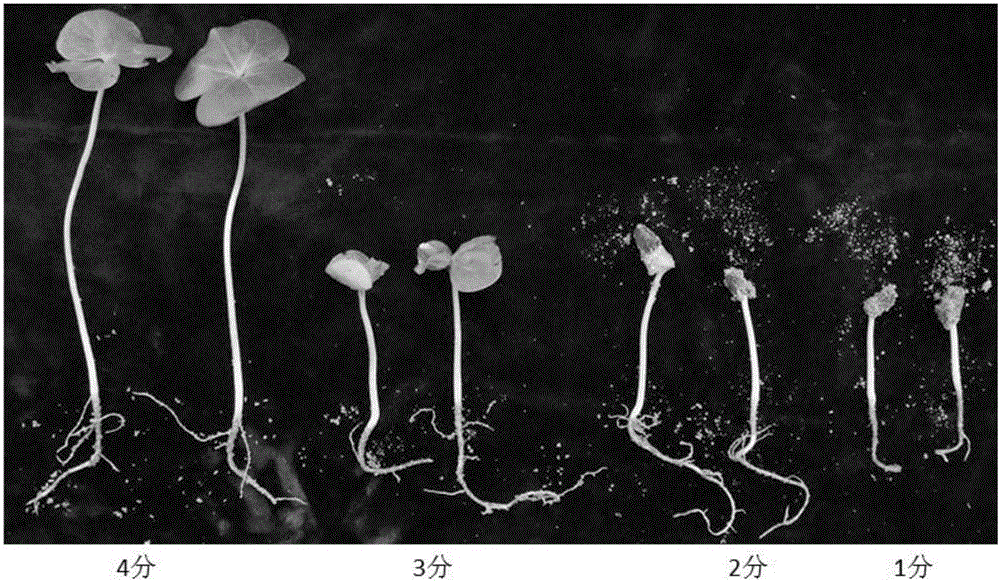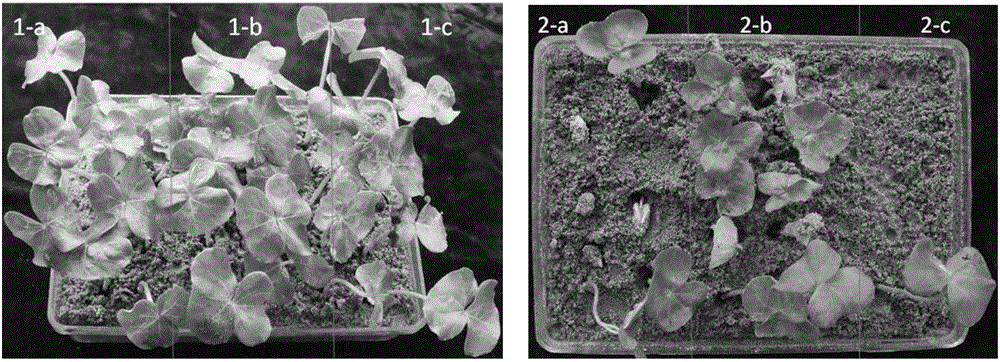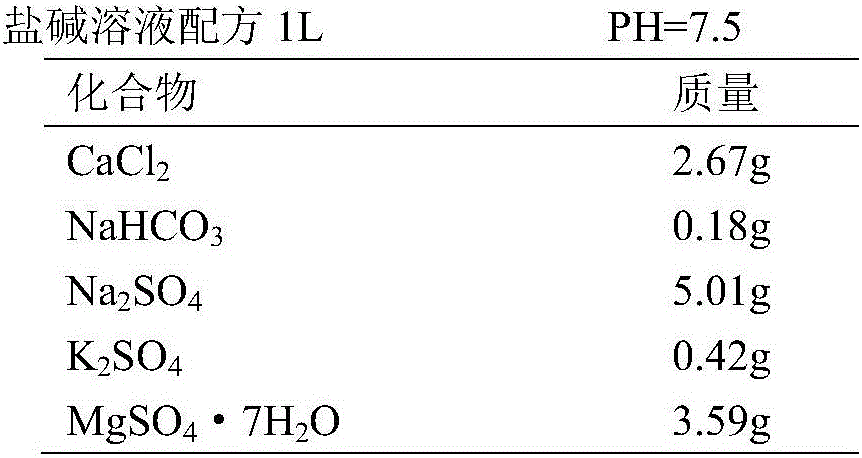Method for identifying germination-stage composite salt-alkali resistance of semi-wild cotton
A technology for identification of semi-wild cotton and resistance, which is applied in the field of compound salt-alkali resistance identification of semi-wild cotton in the germination period, can solve the problems of uneven distribution of salt in the field, poor repeatability of experimental results, and low natural germination rate, and is easy to popularize. And the effect of utilization, short identification cycle, and avoidance of bacterial interference
- Summary
- Abstract
- Description
- Claims
- Application Information
AI Technical Summary
Problems solved by technology
Method used
Image
Examples
Embodiment 1
[0025] Embodiment 1 adopts the semi-wild cotton germination stage compound saline-alkali resistance identification method to semi-wild cotton (broad-leaved cotton 40, broad-leaved cotton 27, pointed spot cotton 25, broad-leaved cotton 32, broad-leaved cotton 120, Mary Galante Cotton 85) and cultivated cotton (Zhong 12, Zhong 16, E Jing No. 1, 7124) were identified and evaluated for their salt-alkali tolerance.
[0026] 1. Cotton material:
[0027] Semi-wild cotton (40 broad-leaved cotton, 27 broad-leaved cotton, 25 sharp-spotted cotton, 32 broad-leaved cotton, 120 broad-leaved cotton, 85 Mary Galante cotton), upland cotton (medium 12, medium 16, Ejing No. 1 ), sea-island cotton (7124) was the reference material for cultivated cotton.
[0028] 2. Pretreatment of seeds:
[0029] Sulfuric acid delints all the seeds with short fluff, selects the same size, black plump, complete mature seeds without pests, and then soaks them in 5% sodium hypochlorite solution for 10 minutes, was...
PUM
| Property | Measurement | Unit |
|---|---|---|
| Diameter | aaaaa | aaaaa |
Abstract
Description
Claims
Application Information
 Login to View More
Login to View More - R&D
- Intellectual Property
- Life Sciences
- Materials
- Tech Scout
- Unparalleled Data Quality
- Higher Quality Content
- 60% Fewer Hallucinations
Browse by: Latest US Patents, China's latest patents, Technical Efficacy Thesaurus, Application Domain, Technology Topic, Popular Technical Reports.
© 2025 PatSnap. All rights reserved.Legal|Privacy policy|Modern Slavery Act Transparency Statement|Sitemap|About US| Contact US: help@patsnap.com



